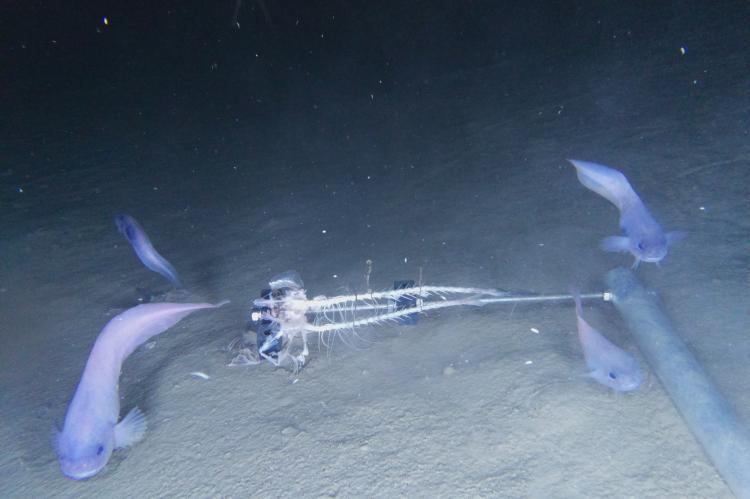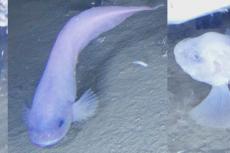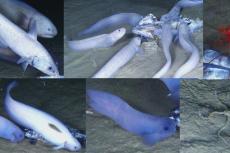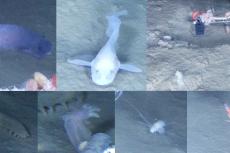Expedition finds three new snailfish species at extreme depths
An expedition to the extreme depths of the Atacama Trench along the South American coast has led to the discovery of three new species of snailfish.
An expedition to the Atacama Trench, one of the deepest places on earth, has yielded video footage of three new species of snailfish, as well as a specimen of one of them.
Temporarily named “the pink, the blue and the purple Atacama snailfish,” the footage shows the snailfish feeding and interacting 6,500 to 7,500 metres below the surface. With their delicate fins and translucent, gelatinous bodies, they can withstand the tremendous pressure of such great depths.
Describing the snailfish as active and looking very well fed, Dr Thomas Linley, a research associate at Newcastle University, explained, “Their gelatinous structure means they are perfectly adapted to living at extreme pressure and in fact the hardest structures in their bodies are the bones in their inner ear which give them balance and their teeth. Without the extreme pressure and cold to support their bodies they are extremely fragile and melt rapidly when brought to the surface.”
Photo credit: Newcastle University.
Amazingly, one of the purple snailfish had followed its prey into one of the traps and was brought to the surface. Unfortunately, it did not survive the trip due to the change in temperature and low pressure. Nevertheless, as a physical—and intact—specimen, it can be preserved in a museum and used to formally describe the new species.
Besides the snailfish, the researchers also captured some rare footage of long-legged isopods, known as Munnopsids. These crustaceans have small bodies and very long legs, and they use "paddles" on their ventral side to swim backwards and upside down.
The expedition to the Atacama Trench, off the western coast of South America, involved 40 scientists from 17 different nations. The freefalling cameras which were deployed at the trench's deepest point just over 8,000 metres, captured more than 100 hours of video and 11,000 photographs.
The findings of the expedition will be presented at the 2018 Challenger Conference, currently being held at Newcastle University on 10 to 14 September.





